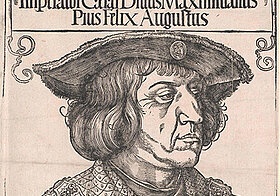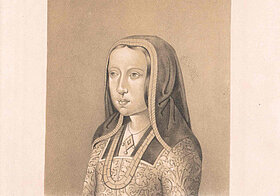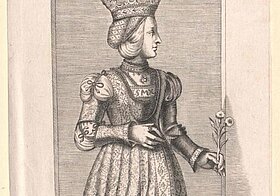Annual maintenance work will take place again this summer, which is why the reading rooms at the Heldenplatz location and in all collections will be closed from Friday, July 25, to Tuesday, August 5, 2025.
Due to the shutdown of the ordering system, no media orders can be accepted from Thursday, July 24, 2025, 4 p.m. to Tuesday, August 5, 2025, 4 p.m. The regular opening hours will then apply again from Wednesday, August 6, 2025.
The study room of the Albertina is closed from July 15 to August 15. During this time (except July 25 to August 5), media ordered from the Albertina collection will be transported twice a week (Monday and Thursday) to the reading rooms of the National Library on Heldenplatz and can be used there.
Starting August 1, 2025, the State Hall will open at 9 a.m.
Due to an event, the State Hall will be closed on August 4, 2025.
Maximilian I (1459–1519), known as the "Last Knight", succeeded his father, Frederick III, as King of the Romans in 1493, and as Holy Roman Emperor in 1508. He himself was the author and co-author of works related to his biography and systematically added to his father’s library. Fervently interested in the arts and sciences, he was in contact with leading contemporary scholars and artists. His sophisticated book projects included such works as The Triumph of Emperor Maximilian I (with A. Altdorfer, A. Dürer, H. Burgkmair), Theuerdank (a biographical novel about his journey to his bride in Burgundy), The White King, the sumptuous Tomb of Maximilian, and his Arsenal Books.
Through his marriage to Mary of Burgundy (1457–1482), important works of Burgundian and Northern French book art passed into the possession of the Habsburg family. The book treasure from Burgundy, which was worth 100,000 guilders at the time, was the equivalent of an eighth of the entire dowry brought into the marriage by Mary of Burgundy. This treasure, which only arrived in Vienna in 1581, included such magnificent manuscripts as the Book of Hours of Mary of Burgundy, the Chronicles of Jerusalem, and the Statute Book of the Order of the Golden Fleece. Through Emperor Maximilian’s second wife, Bianca Maria Sforza (1472–1510), masterpieces of Italian book art in her possession were incorporated into the library.
In addition to Austrian manuscripts produced at the court’s illumination workshop, examples of Bohemian, French, and Italian book art representing the most important developments in European book illumination were kept at the imperial library. Maximilian I moved parts of the library to Wiener Neustadt, while other parts were stored at the castles in Vienna and, starting around 1500, Innsbruck.





